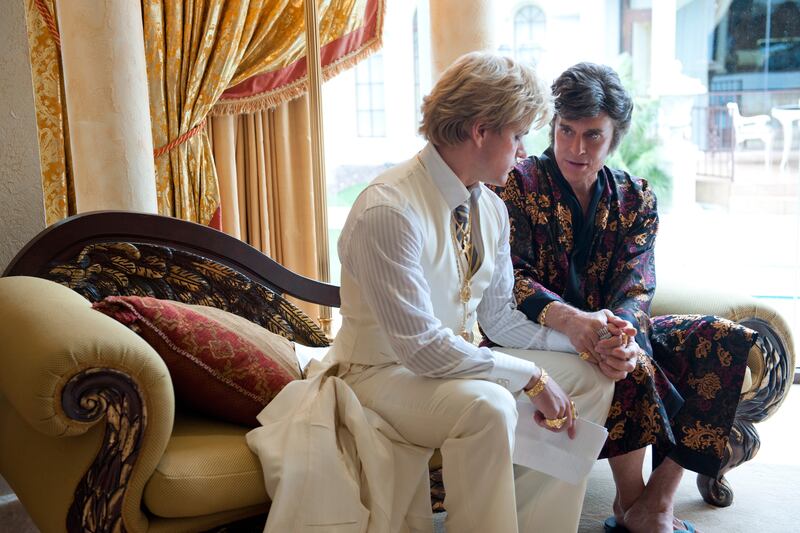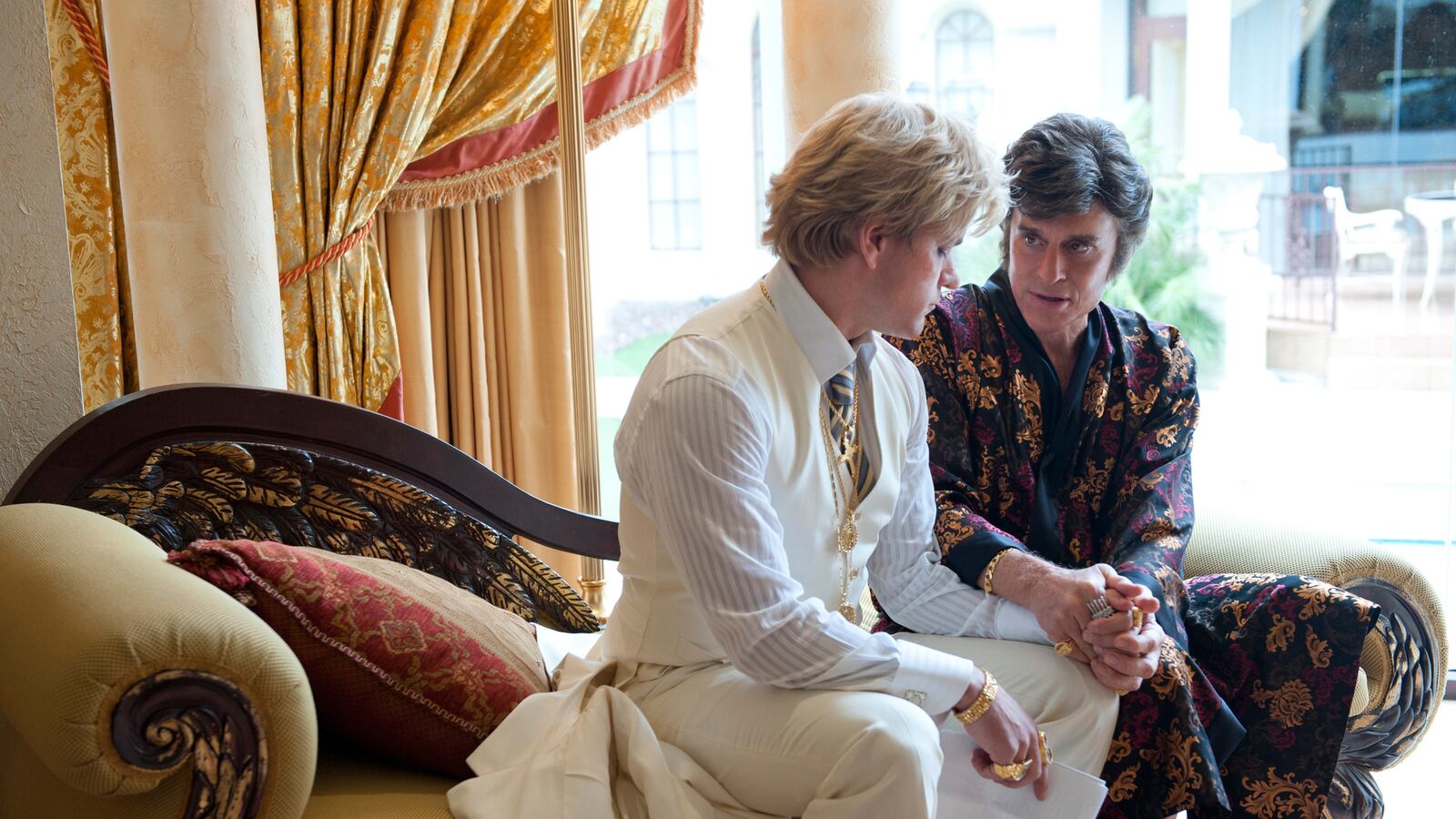Ahead of Steven Soderbergh’s film Behind the Candelabra, which debuts on HBO next week and tells the love story of Liberace (Michael Douglas) and his boy-toy lover Scott Thorson (Matt Damon), a primer on the great entertainer.

Who was he again?
He was only the world’s most famous piano player. Liberace, a.k.a. Mr. Showmanship, grew up in Milwaukee and started playing classical piano at age 4. At 20 he switched to a more glitzy approach after wowing an audience with a playful rendition of “Three Little Fishes.”
Where’d the trademark candelabra come from?
He got the idea to use a candelabra after seeing one used in A Song to Remember, the 1945 biopic about his idol Frédéric Chopin, starring Cornel Wilde.
Was he really a housewife heartthrob?
Oh, yes. His half-hour TV show The Liberace Show ran from 1953 to ’56 and was more popular than I Love Lucy. Comedians like Bob Hope made jokes about his fey manner (“He’s the only fellow I know who leaves a chartreuse ring around his tub”), but his wavy hair and habit of winking into the camera made him a sex symbol to housewives and teenage girls alike. Writer Michael Thompson called the phenomenon “a conspiracy of blindness."
He loved to dress up.
For his school’s annual Character Day, he dressed up as Yankee Doodle Dandy and Greta Garbo, complete with blonde wig and makeup. Liberace grew up wearing his older brother’s hand-me-downs, so he found great comfort in sartorial fantasy. “As he grew more artificial, he grew more genuine,” said Quentin Crisp.
His stage costumes were insane.
There was no such thing as too much or too camp for Liberace. His most expensive item was a $750,000 black diamond mink cape lined with 100,000 Austrian rhinestones. His campiest outfit was a red, white, and blue drum major's uniform with knee-length diamond-patterned socks, sequined tassels, and hotpants.
He was super-rich.
He earned $5 million a year, and his net worth was estimated at $115 million. He owned 39 pianos; numerous Rolls-Royces, including a mirrored edition; and homes in Malibu, Palm Springs, Lake Tahoe, and Hollywood. His house in Las Vegas consisted of three suburban bungalows knocked into one. It had 20 bedrooms and a Hall of Eternal Mirrors.
He was gay, but only in private.
Liberace sued the Daily Mirror newspaper in England in 1959 for a venomous article that called him a "giggling, fruit-flavoured, mincing, ice-covered heap of mother love.” Liberace perjured himself in court by stating he was not homosexual and won the case. Strangely, he persisted in publicly denouncing homosexuality, even as public attitudes relaxed. At a 1973 press conference, he stated that he was ''against the practice of homosexuality because it offends convention and society.''
He loved sex.
Liberace had an affair with Rock Hudson in the ’50s and was rampantly promiscuous in his later years thanks to a silicone penis implant and vials of amyl nitrate. He loved teenage boys and rough trade and fell in love easily and often.
In his 2000 biography, Liberace: An American Boy, Darden Asbury Pyron explained Liberace’s sexual preferences: “His sissy persona notwithstanding, he was the pursuer, the hunter, the initiator.” In other words, he was an inversion of the gay maxim “Butch on the streets, queen in the sheets,” a.k.a. “a top.”
He didn’t have children, he had dogs.
He loved his pets to distraction, owning 27 dogs at the time of his death. He called them his family and would coo at them down the phone. “I won’t say I spoil them,” he said. “It’s more the other way around. They spoil me with endless loyalty, love, and fascination.”
Who was Scott Thorson?
He was Liberace’s lover for six years and wrote the book Behind the Candelabra, about their relationship. Scott was a 16-year-old foster-home runaway whom Liberace took under his wing. Thorson said it was “like a father-son relationship ... but we had sex.” Liberace paid for plastic surgery for Thorson to look like Liberace when he was younger. “I would do anything to please him,” said Thorson.
The couple broke up over Liberace’s chronic infidelity and Thorson’s spiraling drug habit. The pair reconnected just before Liberace’s death, although Thorson has struggled to find peace since. He is currently in jail in Reno, Nevada, facing burglary charges.
Even his death was an event.
Liberace died in Palm Springs, California, on February 7, 1987. He was 67 and weighed just 80 pounds. “I don’t want to be remembered as an old queen who died of AIDS,” he told Thorson on his deathbed. Liberace’s doctors dutifully announced that the cause of death was heart failure, only for the Palm Springs coroner to intercept the hearse en route to the cemetery. A week later, it was announced that Liberace had died of pneumonia brought on by AIDS.
He was buried in a wig.
Liberace was laid to rest next to his mother and brother in Forest Lawn Memorial Park in Hollywood Hills. He wore a wig and makeup and was buried with a photo of his favorite dog and a photo of his last boyfriend.
What about his legacy?
It’s still evolving. The Liberace Museum in Las Vegas closed in 2010, but there is a Liberace Foundation that awards scholarships to musicians. Liberace’s reputation as a musical artist has always been overshadowed by his materialism and gimmicks. As writer Mike Walsh put it, “Liberace elevated style over substance until there was no substance left at all.” But he did have a genius for connecting with audiences: “I enjoy it so much, I just want to share it.”





